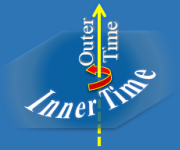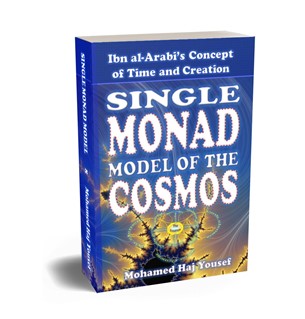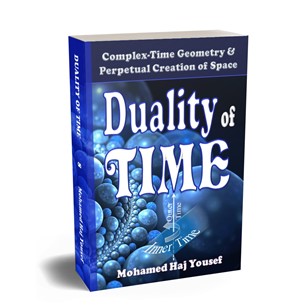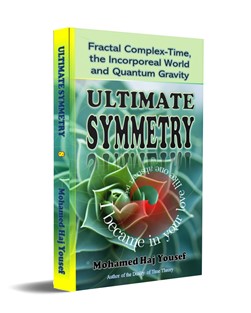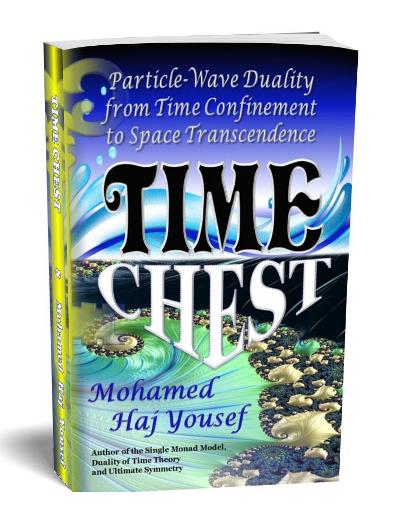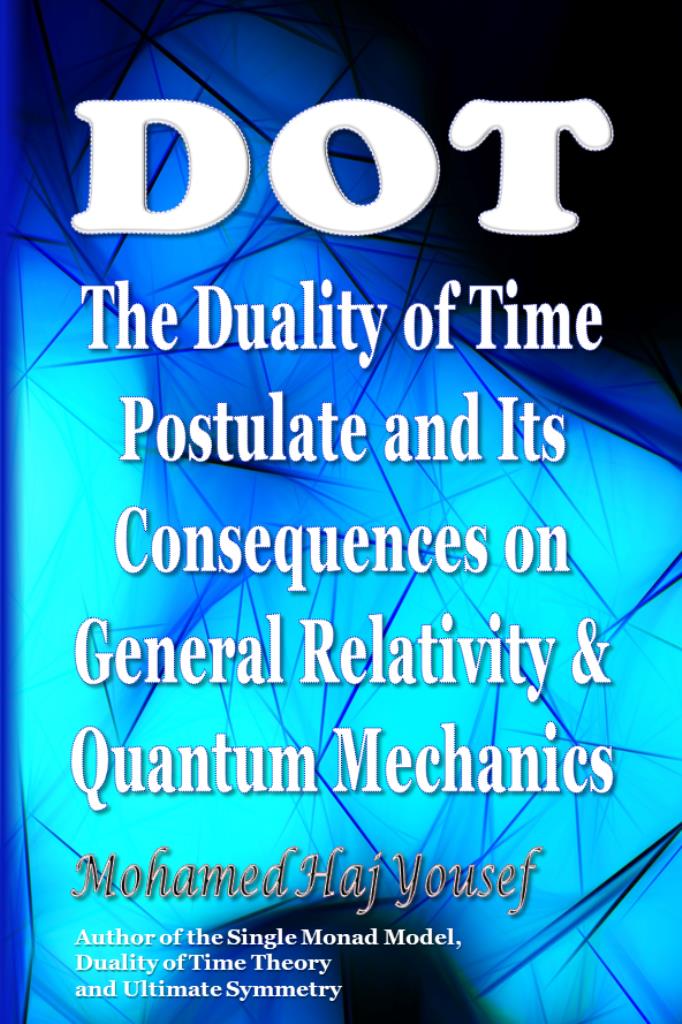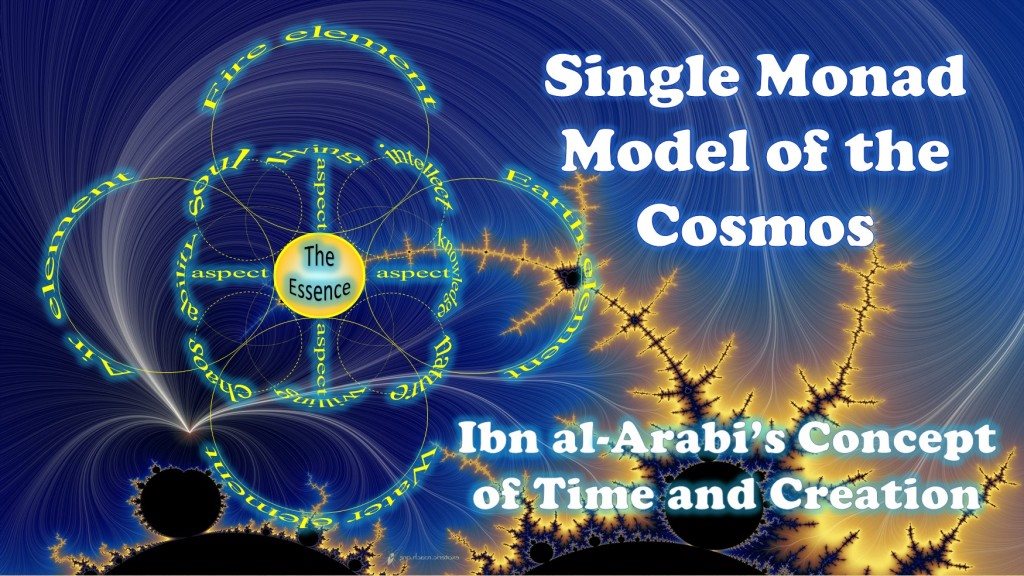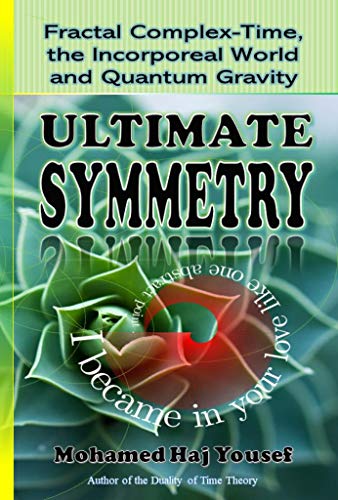
ULTIMATE SYMMETRY:
Fractal Complex-Time and Quantum Gravity
Search Inside this Book
III.2.2 Method I (abrupt change of
speed in the inner time):
The relativistic energy-momentum relation is derived in section
III.2.9 further below, but the simple mass-energy equivalence relation: (without
the half ) can now be easily obtained from the same integration in equation
3.7 if,and only if, we suppose that the object, whose mass is , moves from rest to
, or vice versa, in
zero time , which of course will contradict the laws of physical motion
because the acceleration would be infinite, and hence the force and the energy.
Light does in fact behave in this manner, for example: in pair production, or
when emitted or absorbed; but the photon is massless, unlike other particles
and objects which have mass and suffer inertia and acceleration.
By introducing the duality of time and the resulting
perpetual re-creation, this problem is solved because the conversion between
mass and energy takes place, sequentially, in the inner levels of time, on all
the massless geometrical points that constitute the particle, and this whole
process appears as one instance in the outer level, as demonstrated in Figure I.4
above.
So by integrating equation 3.7 directly from zero to , which then becomes
summation because it is an abrupt change, with only the two states of void and
vacuum, corresponding to zero and , respectively, and since the change in
the outward time is zero, and here we also consider , since
the apparent velocity does not change in this case, but we will also discuss
relativistic mass in section III.2.5 below; thus we obtain:
(3.9)
The difference between the above two cases that result in
equations 3.8 and 3.9 is demonstrated in Figure III.2, where in the first case
the integration that gives the kinetic energy is the
area of thetrianglebelow the gradual arrow (1), while in the second
case it is the area of therectanglebelow the right angle arrow (2).
... Space Transcendence Read this short concise exploration of the Duality of Time Postulate: DoT: The Duality of Time Postulate and Its Consequences on General Relativity and Quantum Mechanics ...
... sponding to zero and , respectively, and since the change in the outward time is zero, and here we also consider , since the apparent velocity does not change in this case, but we will also DISCUSS RELATIVISTIC mass in section III.2.5 below; thus we obtain: (3.9) The di ...
... side this Book III.2.2 Method I (abrupt change of speed in the inner time): The relativistic energy-momentum relation is derived in section III.2.9 further below, but the simple mass-energy EQUIVALENCE RELATION : (without the half ) can now be easily obtained from the same integration ...
... p; (3.9) The difference between the above two cases that result in equations 3.8 and 3.9 is demonstrated in Figure III.2, where in the first case the integration that gives the KINETIC ENERGY is the area of the triangle below the gradual arrow (1), while in the second ca ...
... abrupt change, with only the two states of void and vacuum, corresponding to zero and , respectively, and since the change in the outward time is zero, and here we also consider , since the APPARENT VELOCITY does not change in this case, but we will also discuss relativistic mass in sectio ...
... d Quantum Mechanics ...
... to zero and , respectively, and since the change in the outward time is zero, and here we also consider , since the apparent velocity does not change in this case, but we will also discuss RELATIVISTIC MASS in section III.2.5 below; thus we obtain: (3.9) The difference ...
... same integration in equation 3.7 if, and only if , we suppose that the object, whose mass is , moves from rest to , or vice versa, in zero time , which of course will contradict the laws of PHYSICAL MOTION because the acceleration would be infinite, and hence the force and the energy. Ligh ...
... LTIMATE SYMMETRY: Fractal Complex-Time and Quantum Gravity by Mohamed Haj Yousef Search Inside this Book III.2.2 Method I (abrupt change of speed in the inner time): The relativistic energy- MOMENTUM RELATION is derived in section III.2.9 further below, but the simple mass-energy equivalenc ...
... course will contradict the laws of physical motion because the acceleration would be infinite, and hence the force and the energy. Light does in fact behave in this manner, for example: in PAIR PRODUCTION , or when emitted or absorbed; but the photon is massless, unlike other particles and ...
... aj Yousef Search Inside this Book III.2.2 Method I (abrupt change of speed in the inner time): The relativistic energy-momentum relation is derived in section III.2.9 further below, but the SIMPLE MASS -energy equivalence relation: (without the half ) can now be easily obtained from t ...
... rom zero to , which then becomes summation because it is an abrupt change, with only the two states of void and vacuum, corresponding to zero and , respectively, and since the change in the OUTWARD TIME is zero, and here we also consider , since the apparent velocity does not change in thi ...

